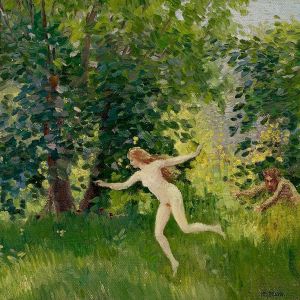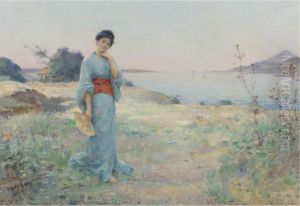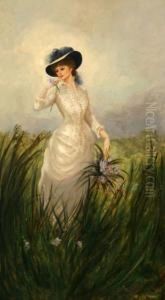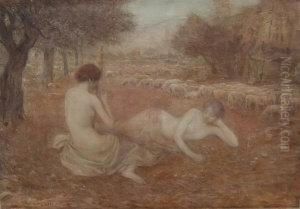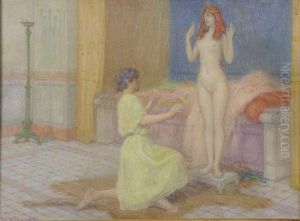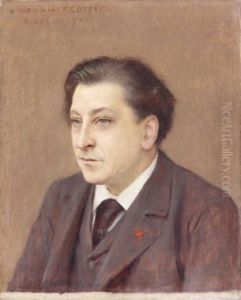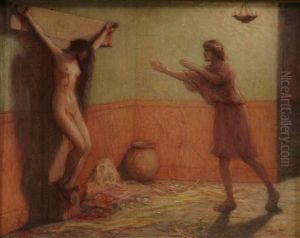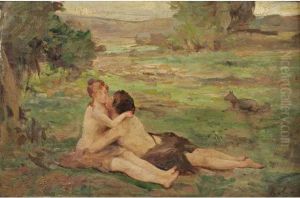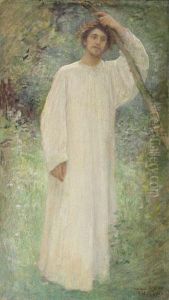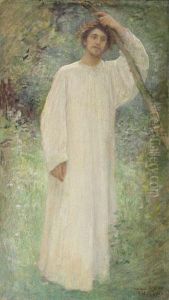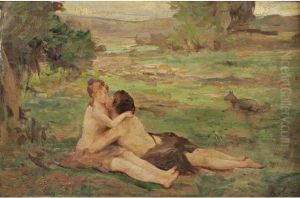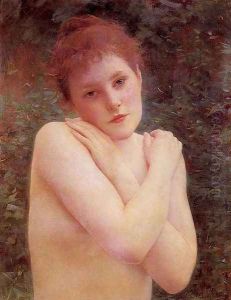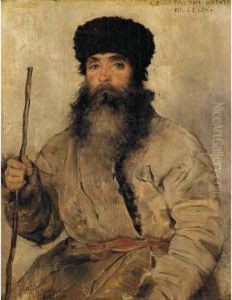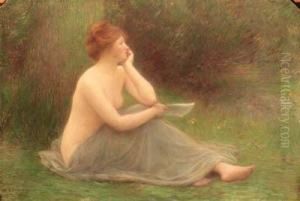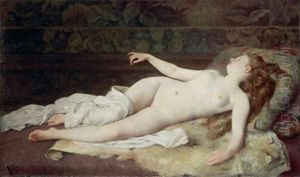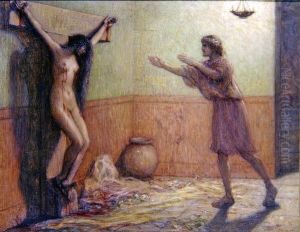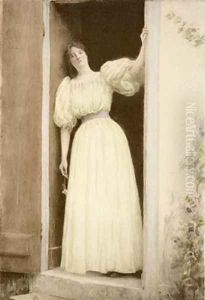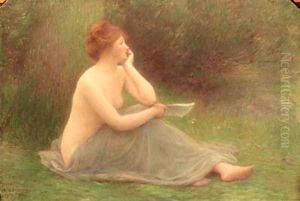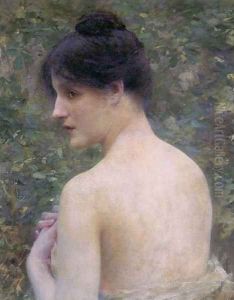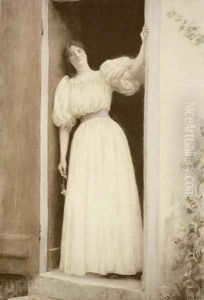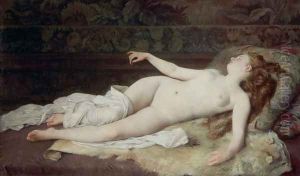Louis-Joseph-Raphael Collin Paintings
Louis-Joseph-Raphael Collin, often known simply as Raphael Collin, was a distinguished French painter and educator born in 1850. Collin's artistic journey began in Paris, where he was deeply influenced by the teachings of Alexandre Cabanel at the École des Beaux-Arts. His style, which evolved throughout his career, was initially rooted in Academic art but later embraced the softer tones and light of the Impressionists, reflecting the dynamic shifts in the art world of his time.
Collin was known for his delicate approach to painting, often focusing on themes of beauty, nature, and the female form. His works frequently depicted serene landscapes and idyllic scenes that highlighted his mastery of color and light. This poetic visualization was well received in the art circles of Paris, earning him a respected place among his contemporaries.
Throughout his career, Collin exhibited his works at the prestigious Paris Salon, where he garnered critical acclaim and several awards, solidifying his reputation as a leading artist of his era. His contributions to French art were not limited to his creations; Collin was also a passionate educator, dedicating a significant portion of his life to teaching at the Académie Julian. There, he influenced a generation of artists, imparting his knowledge and appreciation for the nuances of artistic expression.
Collin's impact on art extended beyond his lifetime, with his works continuing to be celebrated for their elegance and harmony. His paintings are held in numerous public and private collections worldwide, testament to his enduring legacy in the art world. Raphael Collin passed away in 1916, leaving behind a rich body of work that continues to inspire admiration and study among art historians and enthusiasts alike.
